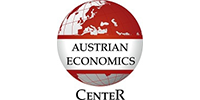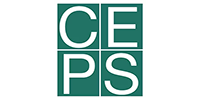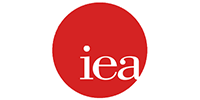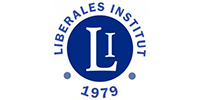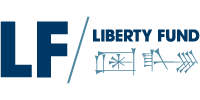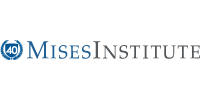Tariffs and consumer expectations: A deflationary scenario?
Tariffs are among President Trump’s most controversial initiatives. Yes, tariffs – those deplorable taxes that apply to all, benefit few, and are despised universally by every living economist and approximately 99% of the dead ones. Across the major schools of economic thought, economists (notoriously) agree on little. Tariffs are one of the few exceptions. Economists abhor tariffs. In The Wealth of Nations, Adam Smith presents what remains the generally accepted position with regard to free trade and tariffs:
A trade which is forced by means of bounties and monopolies, may be, and commonly is, disadvantageous to the country in whose favour it is meant to be established… In every country it always is and must be the interest of the great body of the people to buy whatever they want of those who sell it cheapest. The proposition is so very manifest, that it seems ridiculous to take any pains to prove it…
Adam Smith was hardly the first person to extol the virtues of free trade. Aristotle is generally cited as being the first person whose writings on the subject are known. In 1664, Thomas Mun thought enough about the benefits of free trade to write a mini-treatise on the topic. Adam Smith had quite a lot to say on the topic when Wealth was published in 1776. Henry George opined on the matter in his “Protection or Free Trade” in 1886. And there were many, many more commentators, even before 1900, who saw fit to laud the virtues of free trade. Naturally, the number of commentators after 1900 ballooned, as increases in technology – specifically shipping, railroads, and (later) trucking and air travel – brought the topic to the forefront of policy discussions.
Economists’ abhorrence for tariffs stems from the fact that they are antithetical to free market mechanisms. First, tariffs cloud the information that prices convey, thereby obscuring consumer preferences and retarding information discovery – topics F.A. Hayek investigates masterfully in his 1945 essay, The Use of Knowledge in Society.[1] Secondly, tariffs are generally disruptive to firm competition, interfering with Joseph Schumpeter’s infamous process of “Creative Destruction,” and generally messing with the natural process of competition. Finally, tariffs act as a tax on consumers – a tax that disproportionately affects those who can least afford to pay it.
Simply put, from a purely economic perspective, tariffs are bad. However, there is more to life than economics, and there are other reasons – non-economic reasons – why governments choose to utilize tariffs.
While modern nation-states do battle in financial arenas, even the most myopic economist (or investor) must recognize that there are more forces afoot in politics “than are dreamt of in your philosophy, [Mr. Friedman].” At the same time, there is no denying that politicians’ actions can – and frequently do – have economic ramifications.
What do we make of the Trump Administration’s position on this topic, especially given the frequency and extent of the President’s comments in favor of imposing (relatively) large tariffs on many of America’s primary trading partners?
To say that the situation is ‘fluid’ would be an insult to liquids. Since the beginning of February, investors, policy wonks, politicians, reporters and everyone else have been scurrying to try to keep up with the developments regarding tariffs. The latest news, of course, was the announcement of the “25% ad valorem tariffs for steel articles, aluminum articles, and steel and aluminum derivatives (i.e., “downstream” articles) that will enter into force on March 12, 2025.”[2] Prior to that there were announcements regarding Mexico and Canada – both of which were recanted almost as quickly as they were announced – followed by the 10% tariffs on China.
Peter Tchir, Academy Securities, recently summed up the U.S. financial markets’ view of President Trump’s position regarding tariffs: “It seems obvious to everyone now that this has become a negotiating ploy. He talks about it to rally his supporters but is listening to those who caution him about being too aggressive or too pre-emptive… At this point, it might take actual actions rather than words to move markets.” Peter makes a good point, and, in fact, the view of tariffs-as-negotiation-pawns by the consummate dealmaker, President Trump, has largely been accepted as the consensus position.
Whether tariffs are, as Peter Tchir and others, have suggested, a negotiation tactic, or if they are part of an overall economic policy aimed to bolster U.S. production capacity, or both, the most pressing economic questions is what will their consequences be?
The “Standard Narrative” regarding the likely fallout from implementing tariffs is that such actions will lead inextricably to inflation because the price of imported goods increases when tariffs go into effect. These increases are then passed along to consumers, either directly or indirectly. In either case, tariffs result in upward pressure on the consumer price index (CPI).
However, higher prices are not a fait accompli result of tariffs – infamously the impact of the Hawley-Smoot Tariff Act of 1930 was not inflationary. Hawley-Smoot didn’t result in increased inflation: instead, the Act caused in decreased demand for goods. The “Alternate Narrative” we describe herein explores the rationale for President Trump’s tariffs following a similar path and resulting in demand destruction because of the current state of U.S. households’ balance sheets and individuals’ expectations regarding the economy’s (and their own) future.
Before we explore the Alternate Narrative, it is worth noting the extent to which households are currently utilizing credit. As a recent Bloomberg article highlights:
The miracle that is the post-pandemic US economy keeps chugging along, but there’s a big problem just below the surface, and it’s only getting bigger: debt. Outstanding US consumer debt surged by the most on record in December, reflecting massive increases in credit-card balances and non-revolving credit. Total credit jumped $40.8 billion, according to Federal Reserve data released Friday [7 February 2025]. The figure, which isn’t adjusted for inflation, topped all estimates in a Bloomberg survey of economists.
The proportionate costs of food and housing have risen in comparison to individuals’ salaries. As a result, consumers have been squeezed and forced to increasingly utilize credit for purchases.[3] This reliance on credit has quantitative effects, along with qualitative ones. Quantitatively, reliance on credit means that any increase in interest rates will be felt disproportionately harshly, as would a contraction in the availability of credit. Qualitatively, such reliance tends to exacerbate the “negative wealth effect” associated with any decline in asset prices (such as a “stock market correction”) and generally impacts consumers’ expectations.
When we refer to “consumers’ expectations” what we are talking about is the “unmistakable inner voice” that Friedrich von Wieser’s wrote about, which influences individuals’ beliefs regarding what their economic futures hold.
Incorporating expectations is critically important because what consumers anticipate affects both their future plans and what they do in the present period; aka, consumers’ actions in both the current period, t, and the subsequent periods, t+1, t+2,… t+n, where n is the number of periods over which the consumer is planning. Future plans – and therefore expectations – are key because they influence decisions regarding consumption and investment vs. savings, which, in turn, contribute to both monetary conditions, such as the supply of money and credit, and other factors that determine the performance of the real economy.
Concerningly, consumer expectations – at least those that are being reported & showing up in surveys – currently exhibit a high degree of variance; that is, people have very different views of what is likely to happen in the future when it comes to the real economy and financial markets. Additionally, income and wealth inequality in America is greater now that it has been in decades, with the differences between the “haves” and “have-nots” significantly increasing in recent years.[4] Along with the quantitative impacts of increased wealth inequality comes qualitative – aka, psychological, emotional, or attitudinal – divergence as well.
The strongest argument in support of the Alternate Narrative rests squarely on negative expectations about future economic prospects.[5] When expectations sour consumers generally pull back and adopt a more conservative wait-and-see attitude. It is this sentiment change – an increase in risk aversion – that influences consumers’ and investors’ decisions, and can ultimately cause a decline in aggregate demand, which, in turn, leads to businesses’ making changes such as lowering prices and cutting expenses, including staffing costs.
Empirically, there is no consistent longitudinally statistical relationship between higher risk aversion and aggregate demand. However, it is certainly not difficult to imagine a situation in which increased risk aversion leads to declines in aggregate demand and prices, as households begin hoarding cash in the face of increasing economic uncertainty. This type of hoarding behavior can lead to decreased liquidity in financial markets, especially for riskier assets, such as common stocks or non-investment-grade bonds. Consequently, borrowing costs rise, reducing both the desirability for, and availability of, credit exerting additional downward pressure on aggregate demand, which can ultimately lead to an economic contraction replete with rising unemployment.
In the scenario we are considering here whether the U.S. economy enters a recession, or a depression, is only tangentially relevant. The key point is that, because of the condition of U.S. households’ balance sheets and the elevated emotional level – both pro and con – of the country’s temperament, the result of imposing tariffs could quite possibly result in deflation, not inflation.
Ever since John Maynard Keynes published The General Theory of Employment, Interest and Money in 1936, the standard policy responses to a deflationary scenario have been (i) expansionary monetary policy, and (ii) increased government spending. (Or, in layman’s terms: “Throw money at the problem.”) And, in many instances, a Keynesian response has worked, at least in the short-term. However, interventionalist responses require the capacity to intervene. Therein lies America’s greatest challenge at this time.
It is not clear whether the Federal Reserve or the Department of Treasury have the capacity to enact sufficient stimulative measures to quell a deflationary tide because of how low interest rates already are and the current level of government indebtedness, respectively. The Trump Administration inherited many situations from former President Biden. Economically, the inheritance is far from sanguine.
The manner in which the Federal Reserve has comported itself over the past two decades is deplorable. Chairman Jerome Powell & Co. have managed – through a combination of ill-advised policy initiatives and inconsistent, garbled communication – to navigate themselves into a remarkably bad situation by lowering interest rates far past a desirable level (aka, the “natural rate”).
As a result of the Fed’s missteps, there has been a substantial decline in the confidence market participants (not to mention politicians) have for the Fed, coupled with little room to maneuver. In fact, the incarnations of the FOMC under Janet Yellen and Jerome Powell have done more to validate Murray Rothbard’s comment that “[the] ‘boom-bust’ cycle is generated by monetary intervention in the market” than any other instance in history.
The U.S. Federal Government’s budget is in even worse shape, with deficits at record levels. Perhaps Elon Musk and this century’s gang of “the best and the brightest” will be successful in reining in government largess and reverse the course of loose fiscal policy embraced by the Biden Administration without causing too much consternation, political backlash, and/or a slew of unintended consequences. Perhaps.
While inflation is bad, deflation is worse. Prices increase more readily than they decrease – the same unfortunately holds true for unemployment rates. Furthermore, due to the extent to which households are currently leveraged, a deflationary period would hit them particularly hard since frighteningly high percentage of U.S. households lack the breadth of a capital cushion to successfully cope with a deflationary cycle. It is for all these reasons that we have explored this scenario herein. Furthermore, in an effort to avoid inflation, governments around the world – particularly America’s – should be careful when utilizing tactics such as tariffs to serve political objectives.
In 2004, Michael Bordo, John Landon Lane, and Angela Redish examined periods of deflation in an NBER Working Paper titled, “Good Versus Bad Deflation.”[6] Their conclusions are manifold with a complete summary that is well beyond the scope of this article. However, one of their key findings is that periods of deflation that are caused by “non-monetary demand shocks” – as well as those resulting from either “supply shocks” or “money supply shocks” – fall into the “bad” category; that is, they are particularly pernicious. Furthermore, the authors’ analysis shows that, “Historically, the negative view of deflation may be attributed to the fact that deflation had been largely unanticipated.” In other words, deflation causes harm when people least expect it.
The thesis of this article is not that the U.S. is inextricably on a deflationary path. In fact, the Standard Scenario (describe above) is “standard” because it is widely held and generally supported by most of the available evidence – such as data from the most recent U.S. Bureau of Labor Statistics[7] report and the bond markets. Rather, our purpose herein is to highlight the fact that a deflationary scenario is not out of the question. Furthermore, the occurrence of such an event is greater than is currently being priced into either debt or equity markets.
Because of the prevalence of the Standard Narrative, should tariffs cause a “non-monetary demand shock,” the results could be quite severe, as Bordo, Land, and Redish (2004) have shown is historically the case. It is therefore only prudent for policymakers (along with investors – be they individuals managing their retirement portfolios, or institutional money managers overseeing billions across multiple portfolios) to consider the possibility that the U.S. entering a deflationary period, triggered by tariffs, is very real, and consider – although not enacting – contingency plans for should such an eventuality unfold.
[1] From The Use of Knowledge in Society: “We must look at the price system as… a mechanism for communicating information if we want to understand its real function…”
[2] https://www.thompsonhinesmartrade.com/2025/02/president-trump-announces-new-tariffs-on-imported-steel-and-aluminum-articles-and-derivatives-from-all-countries-with-no-exemptions-or-exclusions/
[3] Individual households are not alone when it comes to over utilizing debt. Among other entities reliant on debt, the U.S. federal deficit is at (non-wartime) record levels. While not the focus of this article, America’s fiscal situation – like that of many municipalities and other governmental entities – is staggering and has (justifiably) garnered a great deal of attention in the financial and popular press.
[4] See, among other sources: https://www.pewresearch.org/social-trends/2020/01/09/trends-in-income-and-wealth-inequality/
[5] “The latest readings on consumer expectations, from the University of Michigan and the New York Fed, suggest Americans are becoming worried about the economy’s prospects, and that it’s all the tariff talk that’s doing it.” —Jordan Parker Erb, Bloomberg News, 13 February 2025
[6] https://www.nber.org/digest/apr04/good-versus-bad-deflation-lessons-gold-standard-era
[7] 12 February 2025 (https://www.bls.gov/news.release/cpi.nr0.htm)



